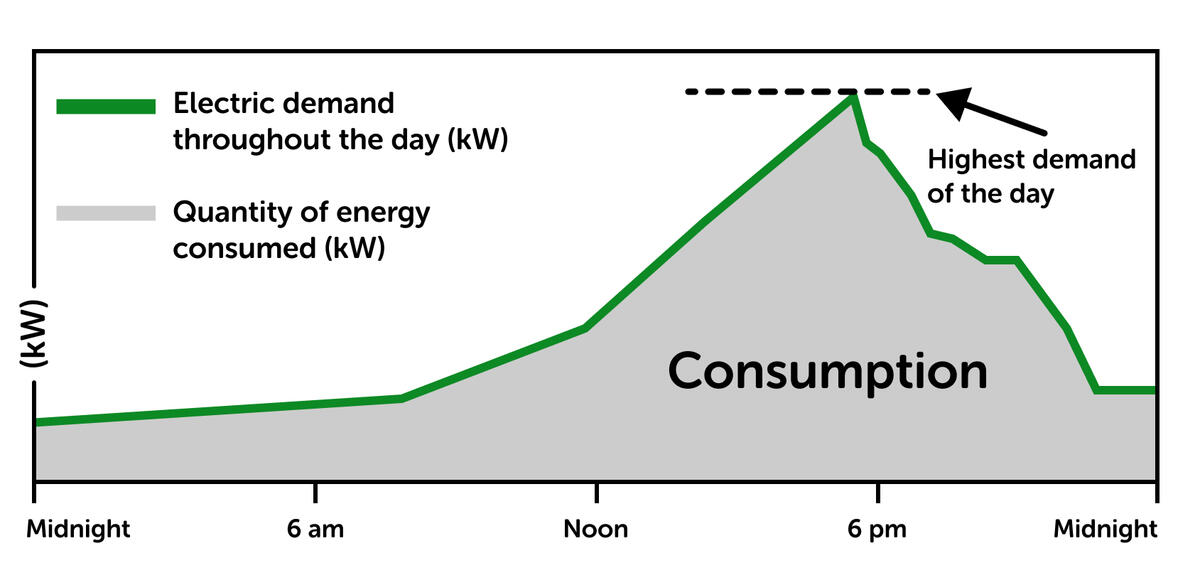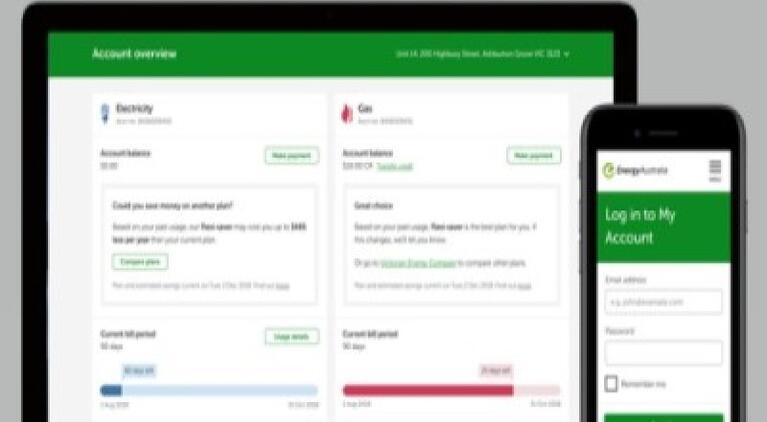Understanding demand tariffs
Demand tariffs – shown as a ‘demand charge’ on your bill – encourage you to use less energy during peak usage periods. These periods may differ based on the area you live in or the time of the year. They are set by your electricity distributor – the company that owns the poles and wires in your area. To find the distributor in your area, visit our Help and support page.
Demand tariffs are based on the maximum energy usage during a specific high-usage time period (called a ‘peak period’) which are usually in 30-minute blocks. This is based on your smart meter.
Measuring demand charges
Demand charges are based on your maximum electricity usage during a peak period. Depending on your type of smart meter, your usage will be measured in either 15- or 30-minute blocks. Your meter will read your electricity usage during these blocks each day in a month, and the block with the highest usage will be your maximum electricity usage, or peak highest demand. The graph below shows how a maximum electricity usage may be calculated throughout a day.
Each 30-minute block is measured from the start of the hour to the middle of the hour, with the next block being from the next half-hour to the end of the hour. So, for example, from 1.00pm to 1.29pm, then 1.30pm to 1.59pm.

You’ll usually see more than one demand charge on your bill – this is because each month is measured separately on the above rate. So, each month might have a different peak usage. Your demand charge window may also differ depending on your location.
Timeframes for demand charge windows
As peak demand time depends on your distributor, each demand charge window may be different for different areas, and in different seasons. Below are the demand times for residential customers.
Ausgrid
1 June to 31 August: 5.00pm to 9.00pm (excluding public holidays and weekends)
All other months: 2.00pm to 8.00pm (excluding public holidays and weekends)
Endeavour Energy
4.00pm to 8.00pm Monday to Friday (excluding public holidays and weekends)
Energex
4.00pm to 9.00pm Monday to Sunday (including public holidays)
Evoenergy
5.00pm to 8.00pm Monday to Sunday (including public holidays)
By understanding how demand tariffs work, you can take control of your energy bill and contribute to a more stable and efficient energy grid. If you don’t think being on a demand tariff plan is for you, you can check out our plans or get in touch with us.

